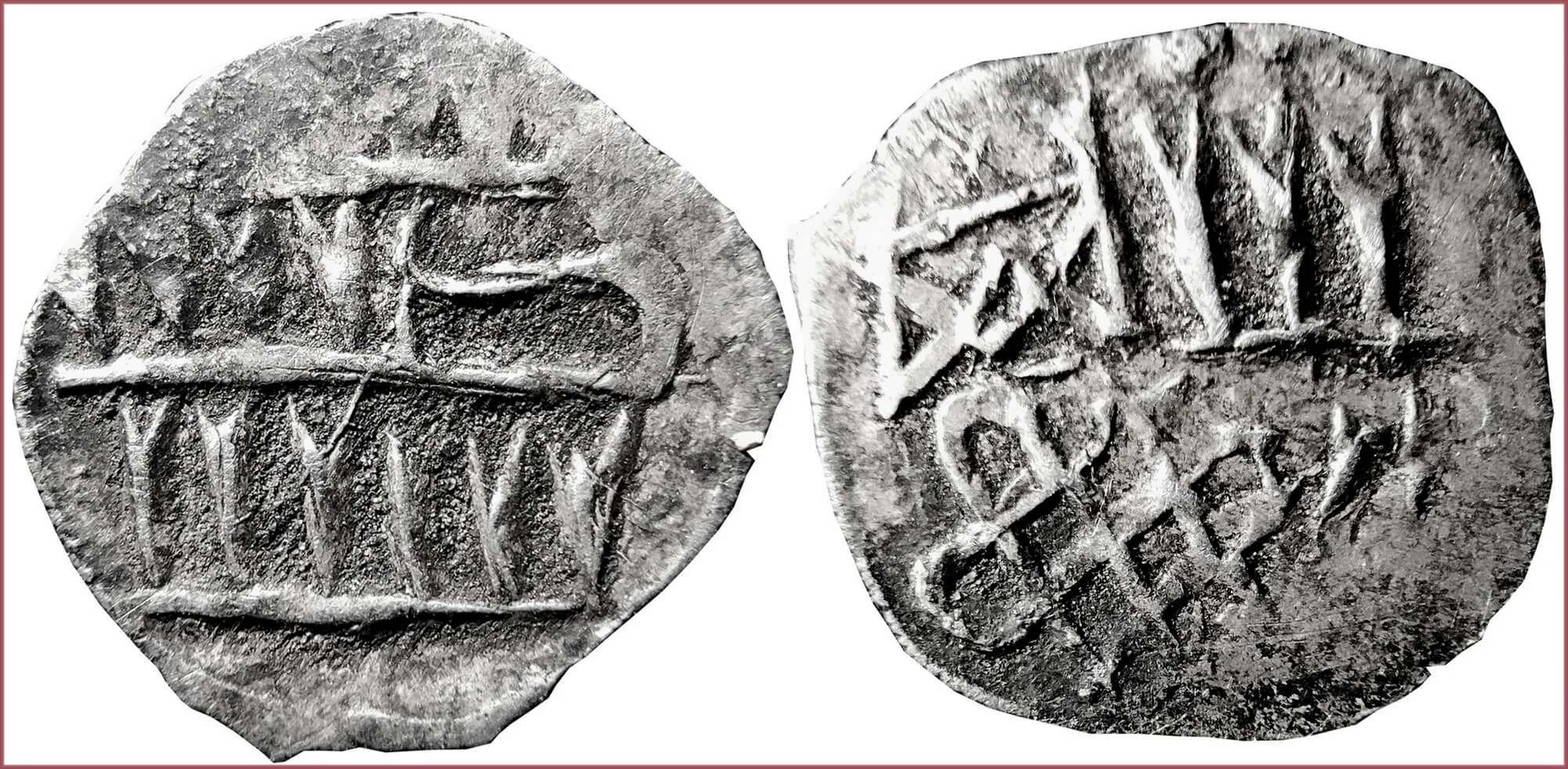DENARAS: COIN OF KYIV (UNDER LITHUANIA)
Denaras, 1362-1394: Principality of Kyiv
Coin of the Principality of Kyiv (the modern capital of Ukraine) as part of the Grand Duchy of Lithuania.
Ruler: Volodymyr Olgerdovych (Lithuanian "Vladimiras Algirdaitis", Ukrainian "Володимир Ольгердович") — Grand Prince of Kyiv (from 1362 to 1394), son of Algirdas (Grand Duke of Lithuania).
Kyiv imitation of dang Khan of the Golden Horde Djanibek: a primitive imitation of the original legend (actually — coin contains Pseudo-Arabic legend). Its only visually similar to the design of the original dang. There is no real text on the coin.
Ornamental "Nodes of Happiness" or "Endless knot" (traditional motif of nomadic coins).
The coin was made (according to the assumptions of numismatists) in Kyiv or nearby by local craftsmen. These denaras were issued in the first decades of the being Principality of Kyiv under the influence of the Grand Duchy of Lithuania (the Golden Horde period was left behind).
- Silver: 10 mm - 0.19 g
- Reference price: 25$
COIN DENARAS — WHERE & WHEN (coins catalog: by names & emitents)
- PRINCIPALITY OF KYIV (as part of the GRAND DUCHY OF LITHUANIA, 14th century): denaras (penyaz, Kyivan dang)
DENARAS as coin name.
Under this name, several types of unrelated coins can be found in English-language numismatic catalogs. It is not surprising: after all, the term "denaras" is just the Lithuanian spelling of the several names of coins: both denarius (an ancient Roman coin) and denar (a medieval coin of a number of mainly Western European countries).
However, I personally believe that in catalogs it is worth indicating the denomination in the format of denaras only for those coins that are directly related to the ancient Lithuania — before the start of unification processes with neighboring Poland.
The coin shown above, in my opinion, should be called exactly as denaras (most catalogs actually do that). Although, in fact, everything is very, very difficult with the identification and classification of this miniature coin...
The problem is that this Lithuanian denaras was produced in Kyiv (the capital of modern Ukraine and its ancient predecessor, Kyivan Rus', which suffered a devastating Mongol invasion in 1240), and the plot of the coin clearly resembled the Golden Horde dang (actually, the coin was a very rough imitation of the dang of Djanibek Khan).
Ukraine (at that time Kyivan Rus), Golden Horde... — Why is Lithuania mentioned here and its specific denomination denaras?
Everything is logical. This coin is identified by historians as a coin of Prince Vladimir Olgerdovich of Kyiv from the House of Gediminid — the dynasty of monarchs in the Grand Duchy of Lithuania. After the battle of Blue Waters in 1362 between the armies of the Lithuanians and the Golden Horde, the Principality of Kyiv was attached to the Grand Duchy of Lithuania.
It is clear with the issuer. And what about the unexpected design for a Lithuanian coin? — It was decided to leave the plot of the coin familiar to the local Kyiv population, who had been using Horde coins for more than a century.
By the way, in Ukraine, such coins are widely known under the name "Kyivan dang" (or "dang, Kyiv imitation"). On some websites, the name "penyaz" is also found to denote coins of this type.











